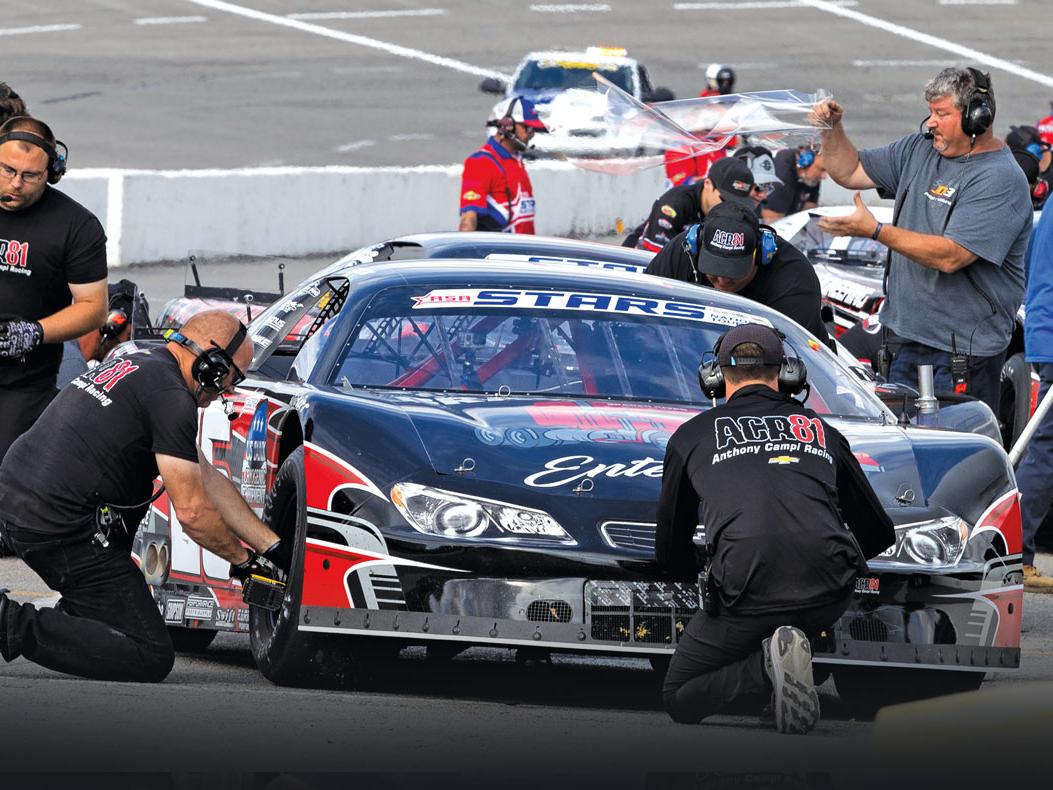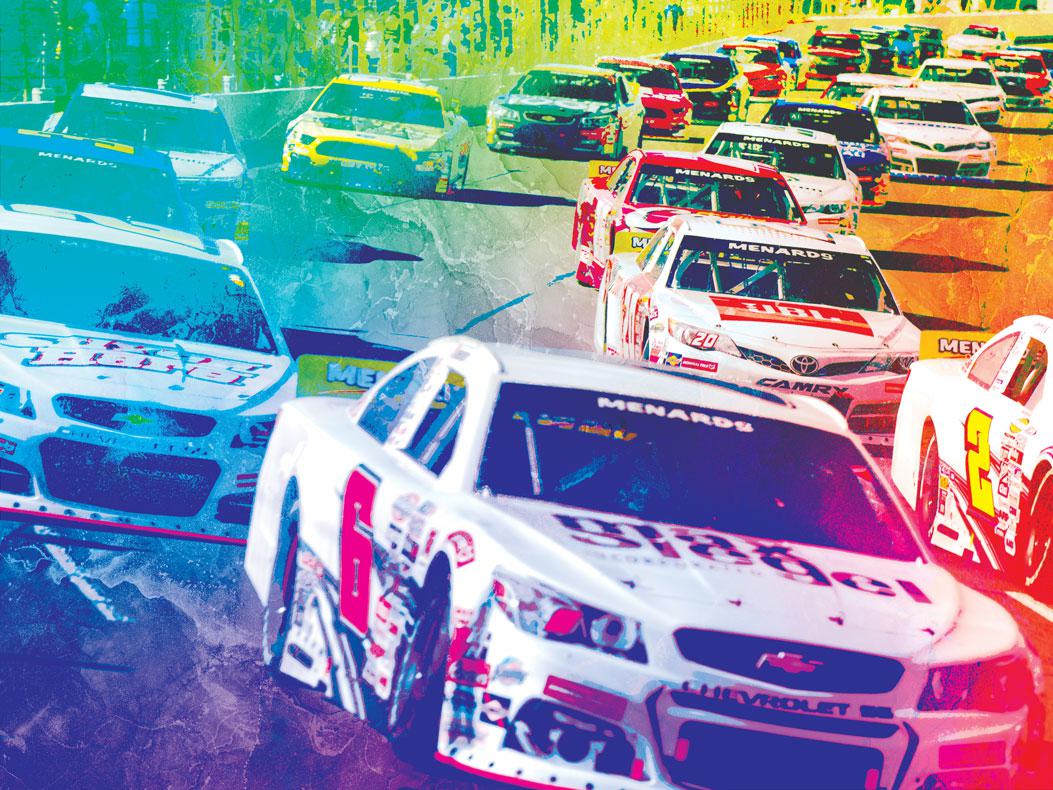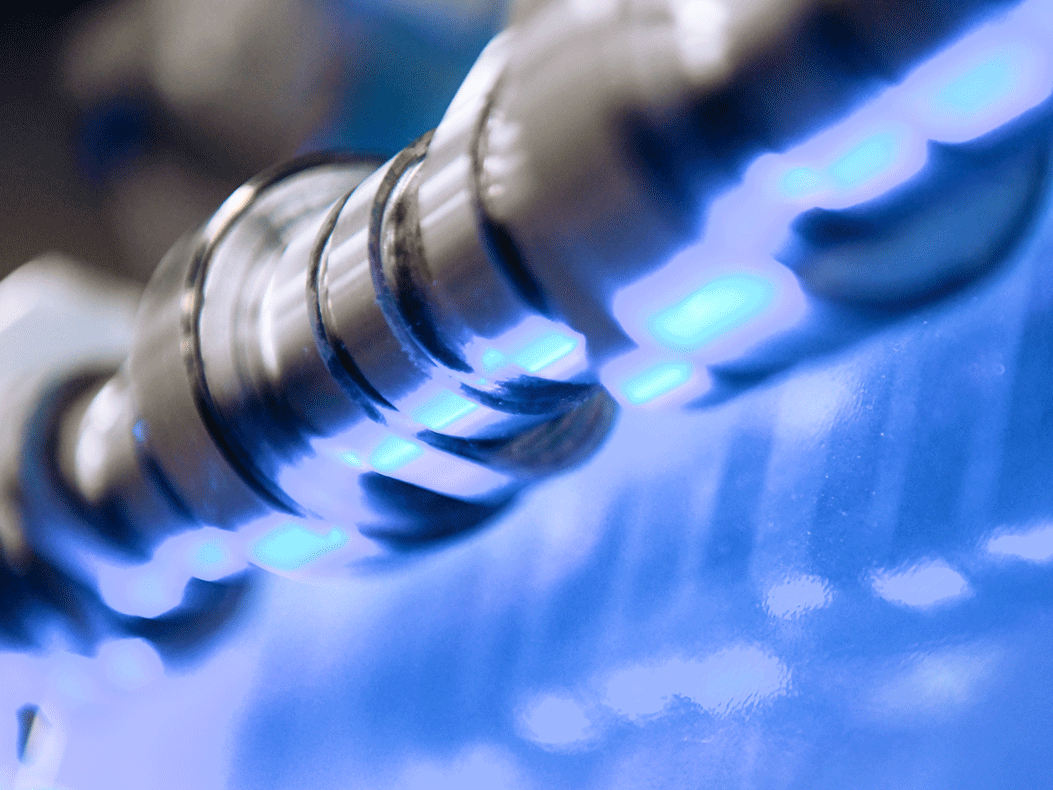From Concept To Track
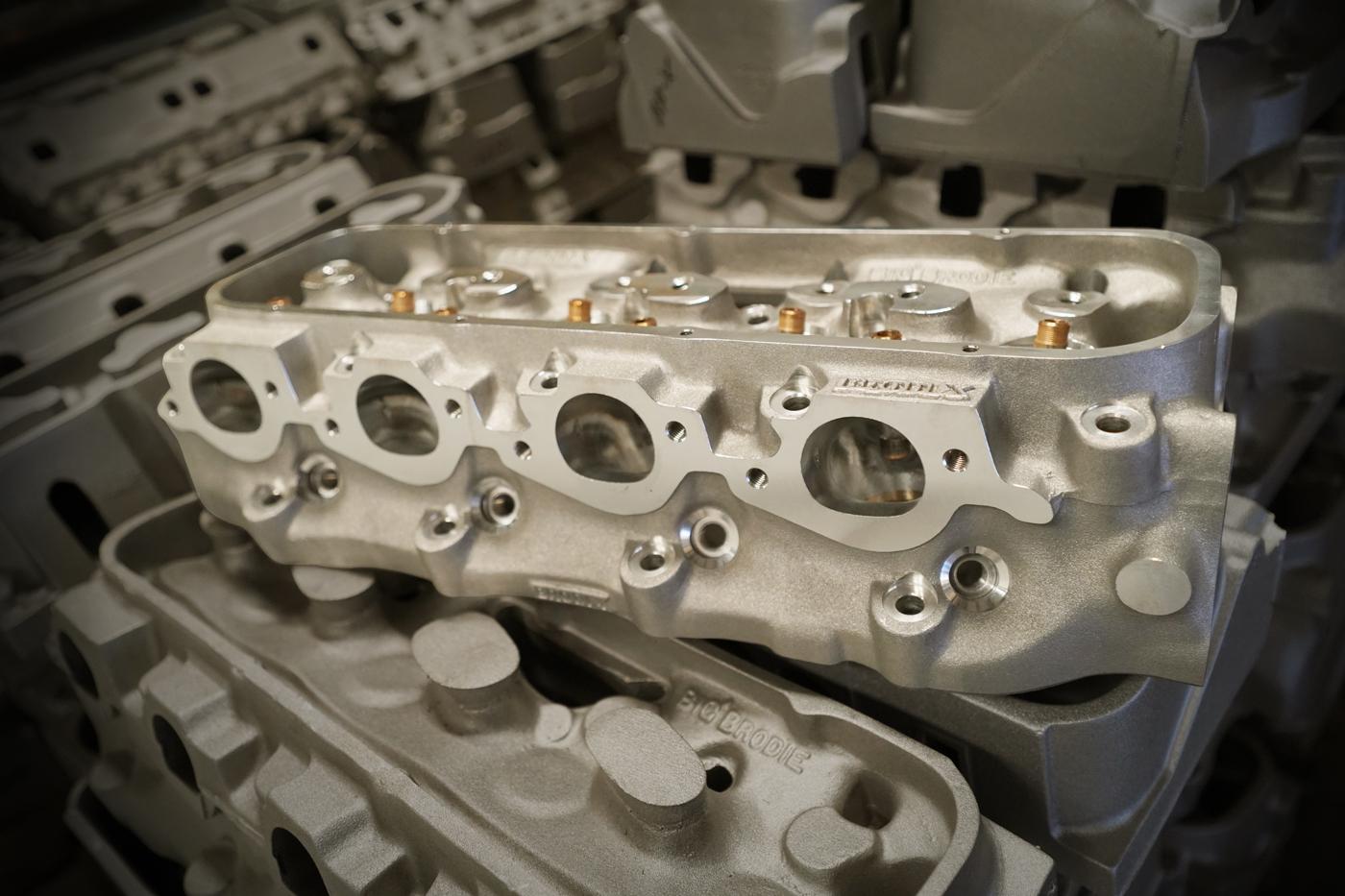
Photo courtesy of Brodix
The journey of cylinder head development starts with a need, then an idea, followed by a combination of computers and experience.
Performance cylinder-head development can be triggered by any number of factors. A fresh engine platform from the automakers is perhaps the leading reason the aftermarket launches new product development in this category. Rule changes from the sanctioning bodies will also perk up the engineering department. Maybe a single racer has an idea that excites a cylinder-head manufacturer.
Jon Bitler of IRD Racing Carburetors in Brooksville, Florida, was assembling a 557-cubic-inch big block Chevrolet for his all-steel, all-glass 1969 Nova drag car when he had to choose a cylinder head.
“It’s our R&D car,” noted Bitler, who said he had considered an exotic 9-degree BBC head. “But I wanted to build a combination that the average Joe can look at and say it’s not out of his league. I wanted to go fast with a set of conventional 24-degree heads.”
Bitler called on Brodix in Mena, Arkansas, which offers a wide variety of racing cylinder heads for numerous applications. “I’m running a ProCharger with a single blow-through four-barrel carb on alcohol,” explained Bitler. “It’s crucial how air moves on the exhaust side.”
Bitler had a number of conversations with Mark Fretz at Brodix, who proposed a hybrid design. “We took our best 24-degree cylinder head, which was our Head Hunter 395cc head,” recalled Fretz. “We then took the exhaust port and the combustion chamber out of an X275 prototype head that we had and placed those in the Head Hunter 395. So we used the intake port of one head and the exhaust port and the chamber of another head.”
Fretz adjusted the intake-port design slightly on this new combination to complement the power adder. The heads were sent off to Bitler for installation. The car was then sent to the hub dyno at Ball Ground, Georgia-based FuelTech, where it pulled more than 3,100 horsepower at 38 pounds of boost. On the track, Bitler’s car has recorded a 3.97 at 186 mph in the eighth-mile on 275 tires.
Some of the conversations between Bitler and Fretz remain confidential, but Brodix has plans to leverage this concept for a new cylinder head. Development costs were actually minimal because Brodix had the CNC programs for the elements, and the foundry had the appropriate cores.
Another interesting BBC head recently released is a billet model from Dart Machinery in Warren, Michigan. So far only a few pairs have been shipped to racers, but the feedback has been positive.
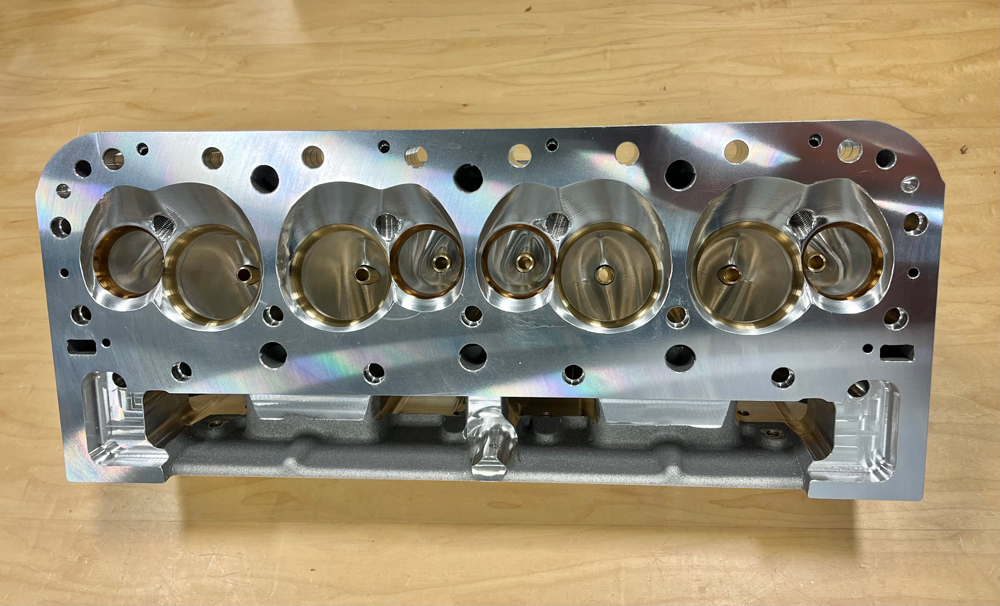
“The initial demand was the Outlaw 632 nitrous racer,” explained Tony McAfee. “They were using the Big Chief 2, which worked well, but we couldn’t do any more with it because of the water-jacket limitations in the casting. And even with it being A357 alloy casting, it could lose the heat-treat after so many heat cycles.”
When the decision was made to use 6061-T6 billet aluminum and design a fully water-jacketed head, engineers made significant changes to the overall design. The guides were moved, and bigger valves (2.550 intake, 1.875 exhaust) were positioned.
“The valvetrain is completely different. We thought, if we are going to redo this thing, let’s straighten out the rocker arms, move the valves so we can safely put bigger valves in it,” continued McAfee, adding that the cylinder head tentatively will be called the Big Chief 3. “There are more iterations on the table right now.”
Following current trends, extensive work was performed on the exhaust side. “The port shape, the throat diameters, the exit size—it’s all stuff we’ve been playing with on the power-adder cars to take everything to the next level on this cylinder head,” added McAfee. “We can only go so big with a valve because of physical limitations. But once we exit the valve, it’s what we do with the throat area, the short turn area, and how fast the port increases cross-sectional area past that point.”
The heads are produced ready to bolt on. There’s an eight-angle valve job with an aggressive valve-seat angle that’s suited for coated titanium valves. The combustion chambers are softened.
“You could play with them, but I would highly advise not to touch them,” said McAfee, noting that development took about one year with testing mostly on the flow bench as opposed to computer modeling.
Rule changes are another motivator for cylinder head development. Recent engines built by Toyota and Ford for the World of Outlaws featured symmetrical intake-port designs. Brodix had proposed a symmetrical-port head for the small block Chevy nearly 25 years ago, but it was deemed illegal for competition. The cylinder head was picked up by some drag racers, but there had been little development work until it was approved in 2023 for World of Outlaws use.
“It’s still an inline valve, 13-degree head. We made some changes to basically bring 20 years of technology back into the casting,” explained Fretz. “We changed the rocker gear and added material where some of the head porters wanted. Now that is being developed through four different head porters. By midseason this year, hopefully, we should have some of those ready for competition.”

One of those head porters is 1 Way Technologies in Washington, Indiana. “We asked Brodix to change some things on the casting so that we could put current technology in as far as porting and spark-plug locations,” said Jeff Jones, noting that the symmetrical ports are a welcome feature. “The big thing with the conventional small block Chevy head has been having the two exhaust ports in the middle and a lot more heat in the center of the cylinder head. Just being able to separate that helps cooling across the head and combustion chambers.”
The other benefit of the symmetrical port design is getting a full bell on the top of the ram tubes on a sprint car individual-runner fuel injection setup. Previous designs were limited to siamesed D-shaped bells.
“We’ve done a lot of testing with what goes on in that void where it’s notched for those two tubes to go together,” continued Jones. “There’s a little horsepower there. Not major, but it’s enough that you want to think about it.”
The head currently sports a 13-degree valve angle, but that could change with further development. “We’ll probably look at some different valve angles on the wet flow bench as we develop this head,” added Jones, “but we wanted to start out with something that we know is a proven piece, as far as the ports go. Those can be optimized with some fine tuning and move forward from there.”
As mentioned, the new Ford and Toyota sprint car heads prompted the Chevy symmetrical port revival. One of those who helped develop the Toyota head was Bob Williams of All Pro Cylinder Heads in Johnstown, Ohio. He worked with engineers from Toyota Racing Development (TRD) and two leading sprint car engine builders.
“Toyota provided the CAD drawings with what they liked, and we made some changes,” recalled Williams. “The ports and chambers were our design.”
Williams’ experience came sharply into play in designing the topside to support the rocker arms and the critical decisions for locating the injector nozzles. “We tailored that to some of our existing ports, so that was basically a no-brainer. Everything works exceptionally well, as far as the motor tune,” he said, noting there have been changes since the first cylinder heads were raced. “There have been some changes in the exhaust. There’s been changes in the water jacket and deck thickness. We fixed any weak point.”
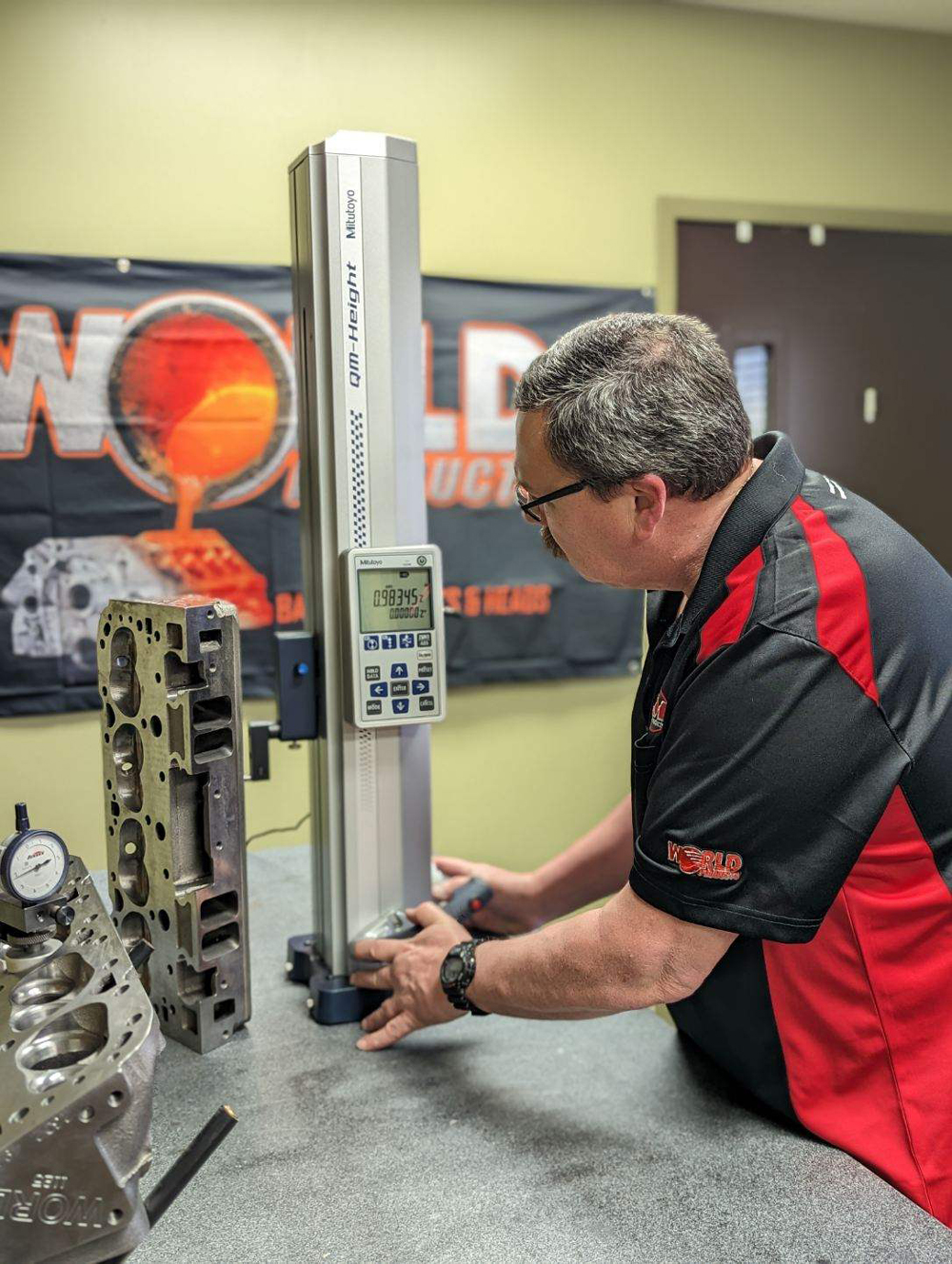
Sprint car officials have also loosened up the rules to allow LS-style cylinder heads, but so far, there doesn’t seem to be much interest. “We developed a head several years ago, but it’s not been a popular combination for sprint cars,” admitted Williams. “The LS platform is a little heavier and harder to work on. I drag race an LS. It’s a great platform but not easy to work on.”
Paused Development
Not all projects follow an uninterrupted timeline. About 10 years ago, Frankenstein Engine Dynamics in Weatherford, Texas, designed a canted-valve LS head for a third party. The development got as far as a 3D-printed half head before the outside party cancelled the project. The idea was reviewed a few years ago but sidelined.
“Fast forward to late fall of last year and we decided it was time to see it through,” recalled Jesse Meagher. “We revisited that proof of concept and quickly realized it was a little too extreme to be truly viable within the confines of our existing castings. So back to the drawing board we went.”
After defining the objectives and settling on valve sizes and a rough goal of the valve angles, a new head was modeled. A full engine assembly was also modeled to analyze valvetrain components.
“The idea was to create a canted-valve F-Series head in LS7 and LS3 versions that would use off-the-shelf components and be compatible with our intake manifolds,” added Meagher.
Meagher worked with Chris Frank on dozens of digital iterations to narrow down the details before setting up the CNC machine. “Due to the nature of the canted valve, cubing these castings required operations that can only be done on a five-axis CNC, so new fixturing and tooling had to also be developed,” said Meagher. “At this point, the project was handed over to Chris and Brad Hall for port and combustion chamber development. We digitally create most of our products here, but when it comes to port design, those two have more than 70 years of combined experience.”
Work continues on the project today. When the port designs are finalized, Meagher will wrap up the CNC programming to optimize surface finishes before prototype sets are machined.
“That set of cylinder heads is then valve jobbed, assembled, and ready for real-world testing. We will initially run the heads on our in-house engine dyno. Assuming all goes well on the dyno, the prototype heads are packed up and sent out for testing at the track,” said Meagher.
The majority of performance cylinder heads come from aluminum castings; however, there is still interest in cast iron. World Products in Louisville, Kentucky, offers iron castings for big and small block Chevys and small block Fords.
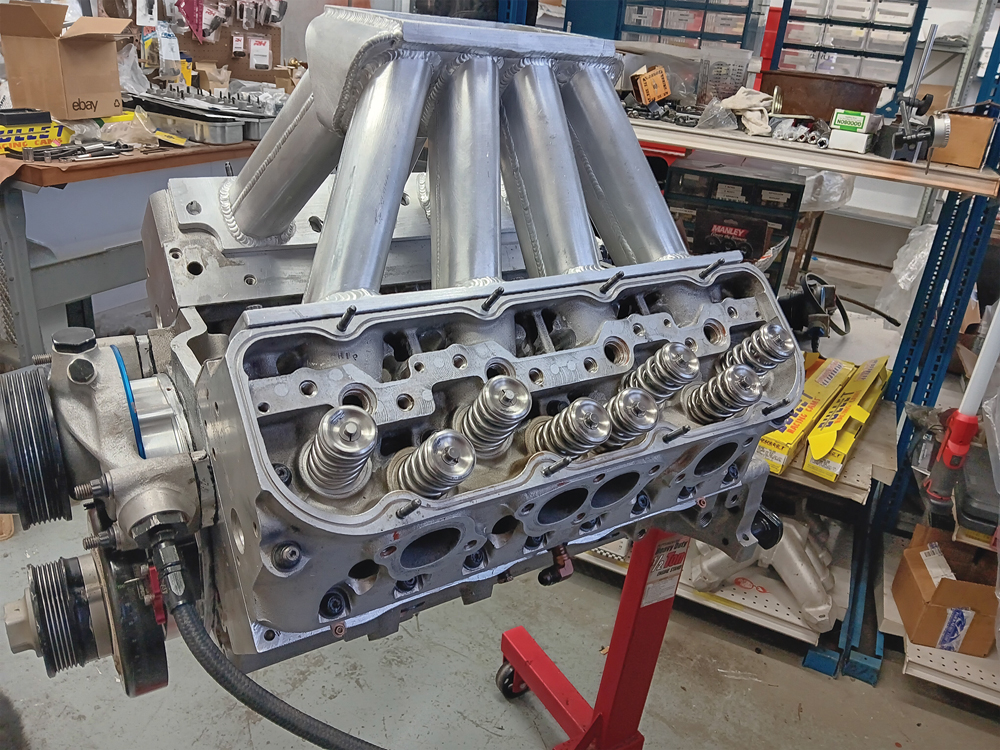
“A lot of what is driving our catalog is circle track where they mandate iron heads,” said Jack McInnis. “Also, a few classes in NHRA Stock and Super Stock and the truck-pulling competition. Right now, we’re looking at re-engineering some of our heads. We want to update them and get them to flow a little better.”
The pandemic hampered manufacturing of World Products cylinder heads and blocks as foundries were shut down or forced to limit production. “We’re just getting the word out because for a year or so we hardly had any cylinder heads available. Now we have pretty much everything in stock,” explained McInnis, adding that World continues to offer CNC porting for select applications.
One of the more interesting trends in dirt track racing is the growing use of small block engines with 4.500-inch bore spacing compared to the conventional 4.400-inch blocks. The wider bore spacing is now mandated on NASCAR engines, so that has opened up some trickle-down opportunities. Mike Weinle of Weinle Motorsports in Cleves, Ohio, found three sets of Chevy R0X heads, which are basically SB2.2 heads with a 4.5 bore space.
“I did a bunch of port work on them and then built six different intake manifolds. The problem with the head was that it didn’t make enough torque, and nobody had a manifold that would help the torque,” said Weinle. “I’m also building a carbon fiber manifold because the dirt-track manifold gets so hot. I figure we’re going to gain some power there with a cooler charge.”
OE Influence
Detroit’s latest engine platforms will generate aftermarket projects, and GM’s LT architecture is one that poses a couple of unique challenges with its direct injection (DI).
“We often try to push the rpm limit of the ports and valvetrain, but different applications desire different features. Let’s take the LT platform as an example,” explained Matt Hollywood of Mast Motorsports, Nacogdoches, Texas. “Some people want to run port fuel injection and a GM LS ECM to retrofit to another vehicle. Some people want to bolt the LT4 supercharger on and run direct injection with a larger combustion chamber for the lower compression ratio that forced induction requires. Or we could look at our Mozez race head line up. Some want to run naturally aspirated on race fuel with high compression and push past 10,000 rpm, still others want to run alcohol and require 16 injectors. We try to add versatility for all, and it’s a continuous improvement process that doesn’t end.”
Once Mast sets a project goal, engineers use 3D modeling to create a concept and ensure compatibility with related components. The team will create prototypes using 3D printing for the sand cores. “That’s expensive, but we could find errors or make improvements before investing in the tooling to mass produce the part,” added Hollywood.
Fixturing for the CNC machines will also be developed, then quality controls are set as production ramps up. “While all of this is going on, the team is working on valve-spring testing on our in-house Spintron,” he continued. “Also, working with suppliers to source valves, locks, retainers, seats, and guides. All this takes eight months to a year and could take longer depending on the complexity of the project.”
The Gen III Hemi is also receiving plenty of attention from cylinder head manufacturers. Air Flow Research in Valencia, California, has developed a new head, starting with extensive computer time.
“This was really the first time the majority of it was designed on the computer in CAD,” said Steve Arent. “The old-school guys used to draw everything out on a napkin, make a sample, make some tweaks and changes along the way. With this head, we had FEA and CFD analysis. We left the stock valve angles but opened up the intake and exhaust to a certain point.”
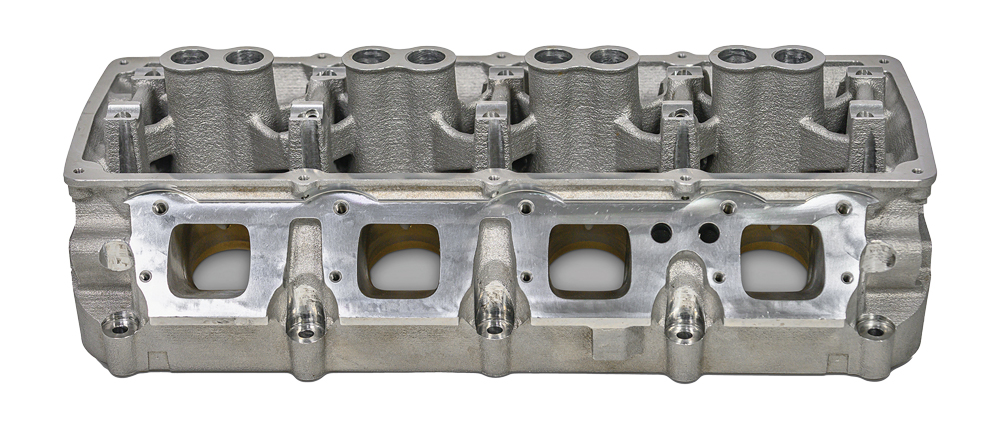
Nicknamed the Black Hawk, the cylinder head comes fully CNC machined with either a 212cc or a 224cc intake runner. “They can be ordered with either a 69 or 73cc combustion chamber,” explained Arent. “We also have an as-cast version with a 185cc intake runner.”
Based in Olive Branch, Mississippi, Edelbrock has the Performer RPM and Victor CNC versions of its Gen III Hemi head tentatively set for a Q3 release this year. Edelbrock raised the intake-port roof to increase flow, which required raising the spring seat. To maintain target valve lift, adjustments were made to the rocker support bar. “We also did a lot of work to add rigidity to the rocker shaft mount,” said Jeff Krangnes. “That’s one thing we can do with 3D printing the cores.”
The base envelope for the Hemi didn’t allow changes to valve angles or other significant dimensions. Stock valvetrain components and the factory valve covers will fit on the cylinder heads. Valve sizes will be 2.250 inch on the intake and 1.650 inch on the exhaust.
The Performer RPM is an as-cast model, while the Victor CNC is fully machined. Both are produced with the company’s new Clean Cast Technology, which helps eliminate casting flaws and promotes a smoother internal surface finish that was designed to improve air and coolant flow. The Victor CNC heads offer fully machined ports and combustion chambers and come with copper valve seats installed.
“The Performer RPM has an intake flow of 387 cfm at .700-inch lift, and the Victor CNC flows 431 cfm,” said Krangnes, adding the intake port volume will be 225cc and the combustion chamber will be 72cc.
As technology improves, cylinder head designers will be relying on many different tools to finalize design.
“Back in the early days, people lived and died by the flow benches. I think we have learned that the flow bench is definitely a tool that we use to compare designs,” said Jones of 1 Way Technologies. “What we see now has more to do with atomizing the air-fuel mixture, looking at wet-flow characteristics and looking at cross-sectional areas and port velocities that we need to have for certain applications. That goes hand-in-hand with observed flow numbers. We look at a lot of other things today to get to the end result.”
SOURCES
1 Way Technologies
1way-tech.com
Air Flow Research
airflowresearch.com
All Pro Cylinder Heads
allproheads.com
Brodix
brodix.com
Dart Machinery
dartheads.com
Edelbrock
edelbrock.com
Frankenstein Engine Dynamics
frankensteined.net
IRD Racing Carburetors
irdracing.com
Mast Motorsports
mastmotorsports.com
Weinle Motorsports
weinlemotorsports.com
World Products
pbm-erson.com
 MEMBERSHIP LOGIN
MEMBERSHIP LOGIN JOIN PRI
JOIN PRI
